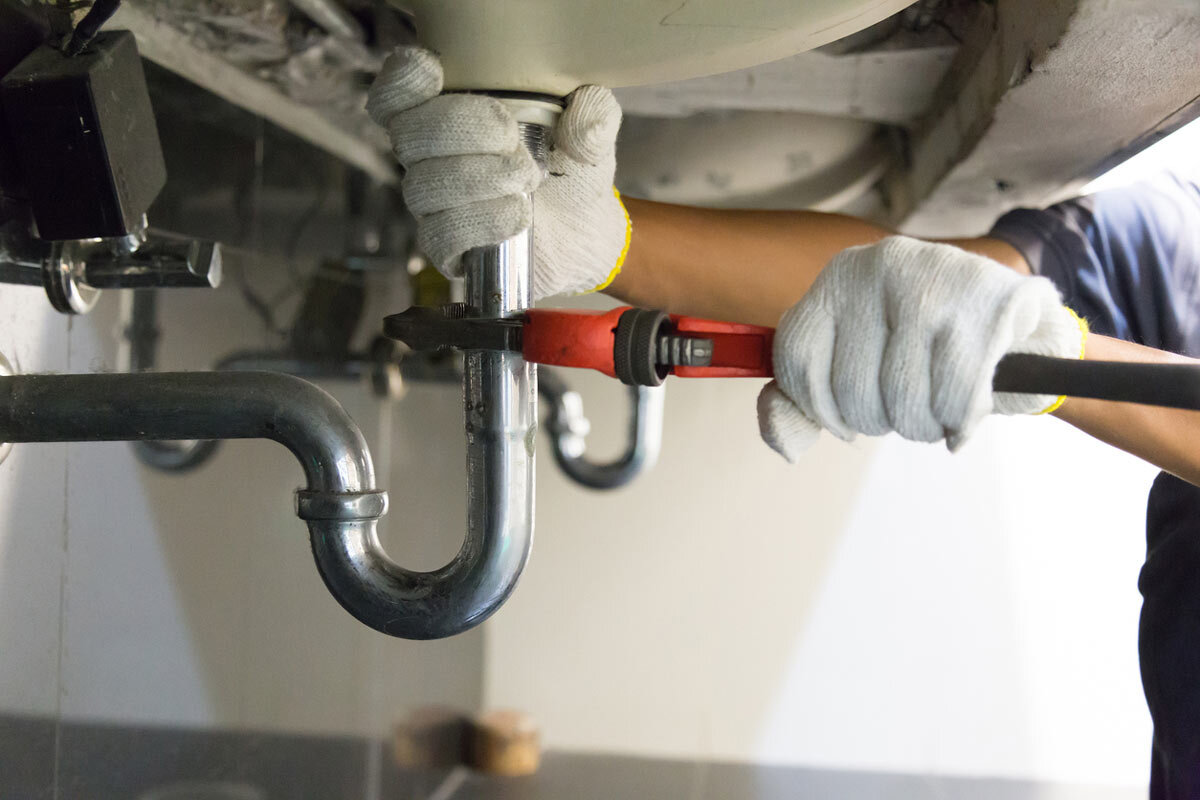When you see a pool of water on the bathroom floor by the cabinet or inside the bathroom cabinet, it means you have that dreaded circumstance you may have Googled before: "leaking pipe under bathroom sink." The first thing to do is turn off the hot and cold water valves under the sink. Next, you may be thinking you're going to have to call a plumber. Well, if you're handy with simple tools, this guide to troubleshooting bathroom-pipe leaks may save you a plumbing service call.
Diagnose the Source
The first step in repairing that "leaking pipe under bathroom sink" is locating the leak. There are six possible sources: the hot- and cold-water shut-off valves, the hot- and cold-water hose connections, the drain assembly, and the P-trap.
Shut-Off Valves Leak
Leaky hot- and cold-water shut-off valves must be replaced. You'll need to turn off the water main. Shut-off valves are either soldered on, which requires a plumber to fix, or screwed on with a compression fitting. If it's screwed on, simply purchase a new valve and replace it.
Water-Hose Leak
If the dreaded "leaking pipe under bathroom sink" is one of the hot- and cold-water hoses, it may be possible to troubleshoot the leak yourself. Use a pair of pliers to tighten the connection. If that doesn't work, unscrew the hose and see if the gasket is worn and needs to be replaced.
Drain Leak
Drain-assembly leaks are the most difficult to repair and will likely require you to call your plumber. To fix this type of "leaking pipe under bathroom sink," the P-trap is removed first and then the drain is removed. Wrap the drain threads with plumber's tape and reinstall the drain and P-trap.
P-trap Leak
The P-trap is the curved-shaped pipe beneath the drain. Two compression nuts hold the P-trap together. If the leak is coming from one of the nuts, tighten it by hand, and if that doesn't work, use pliers to tighten the nut.
If you need a professional plumber for that "leaking pipe under bathroom sink," contact Air Assurance!

